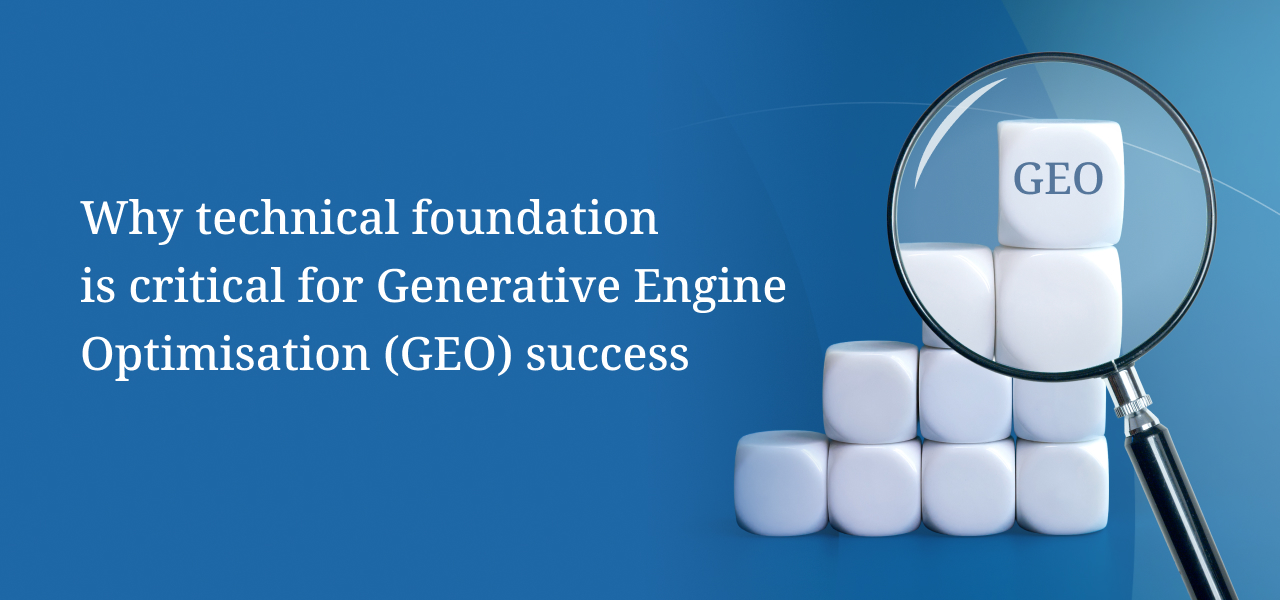I’ve been watching how search is changing throughout 2025, and one theme keeps repeating: the old SEO playbook (aka traditional SEO) just doesn’t deliver like it used to.
Instead of sending people to websites, engines like Google now answer questions directly. In fact, recent analysis shows that Google’s AI Overviews can capture more than 25% of clicks from top-ranking organic results. That’s a massive shift in how B2B buyers discover solutions.
Trying to keep SEO investments working in this environment feels like chasing a moving target. Visibility is no longer just about “ranking.” It’s about being cited.
What is GEO, and why does it matter?
GEO flips the old SEO model on its head. Instead of fighting for page-one rankings, you’re aiming to be the trusted source AI tools quote inside their answers.
Here’s the difference:
SEO answers: “Where can I find information about X?”
GEO answers: “What should I know about X?”
AI condenses information into synthesized responses, and the brand it cites gets instant credibility, without requiring a click.
This fits perfectly with how B2B buying has evolved.
Research shows 58% of consumers now rely on AI for product recommendations, a trend that is accelerating in complex B2B decision-making processes.
AI systems pull from technical docs, research papers, forums, and authoritative articles. They reward content that’s expert-driven, complete, and consistent across multiple sources.
Why traditional SEO clicks are no longer enough
For years, SEO success was measured in one way: traffic. More clicks meant more visibility, and more visibility meant more opportunities. Simple.
But in 2025, that equation doesn’t hold anymore. AI has changed how people search.
Zero-click search is exploding
Google’s AI Overviews now appear in over 50% of all search results across devices as of mid-2025, showing rapid adoption of AI summaries in search.
Google’s AI Overviews now take over a big share of user attention, capturing more than 25% of clicks that used to go to organic results.
Even the coveted #1 ranking can lose more than a third of its traffic when AI steps in. And according to Pew Research data, nearly 60% of searches may now end without a single click.
Implications for strategy
Traditional keyword gap analysis no longer lines up with how people actually search. Ranking on page one isn’t the prize anymore. The real win is being cited inside AI-generated answers.
The visibility gap
Visibility now extends far beyond page-one Google rankings. It spans AI platforms like ChatGPT, Perplexity, Claude, and industry-specific bots that influence buyer decisions before they even reach your website.
When traditional SEO still works
However, traditional SEO still has its place. It works well for:
● Branded searches
● Clear product intent queries
● Local services with immediate needs
● Content that’s already performing organically
But SEO struggles when buyers start asking bigger, more conversational questions; the kind that come up in complex B2B decisions with compliance concerns, system integrations, or multiple people weighing in.
That’s where GEO shines. AI thrives at pulling context from multiple angles and giving nuanced recommendations. If your content isn’t built to be cited in that mix, you risk being invisible during the most critical buying moments.
Building a GEO strategy without starting over
Here’s the good news: GEO isn’t about throwing away your SEO work. It’s about expanding your strategy.
The best approach is what we call compound visibility, layering traditional SEO with GEO principles so your brand shows up across all search behaviours.
Start by asking:
Which of your current assets are being cited in AI responses?
Where are competitors weak, leaving gaps for you to own?
How well does your content structure support clear, complete answers that AI can easily synthesize?
Content that’s technically accurate, logically structured, and supported by citations has a much higher chance of being pulled into AI answers.
Think of it as optimising not just for discovery, but for synthesis.
At Manning & Co., we apply a three-pillar framework:
● Pillar 1 – Foundational GEO: Technical optimisation (schema, structure, internal linking) that makes your content AI-readable and citation-ready.
● Pillar 2 – Conversational Content Ecosystem: Content clusters built around buyer conversations, not just keywords, to answer complex B2B questions.
● Pillar 3 – Multimodal assets & Multi-Platform: Video, audio, visuals, and PR signals that expand visibility beyond text and across high-intent platforms.
Preparing for what’s next
Every industry will lean into AI search at its own pace, and no two buyers act the same. There’s no universal playbook.
What does work is a flexible approach, one that keeps the strengths of traditional SEO while layering in the new GEO principles to stay visible as search evolves. That means tracking both traditional metrics (rankings, traffic) and new ones (citation frequency, AI-driven referral quality).
The companies that win in this new landscape won’t just chase rankings. Instead, they’ll position themselves as the experts AI engines trust when it matters most.
If you’re ready to capture visibility across traditional results, AI summaries, and even specialized industry AI tools, let’s talk. Reach out at hello@manningandcogroup.com.







